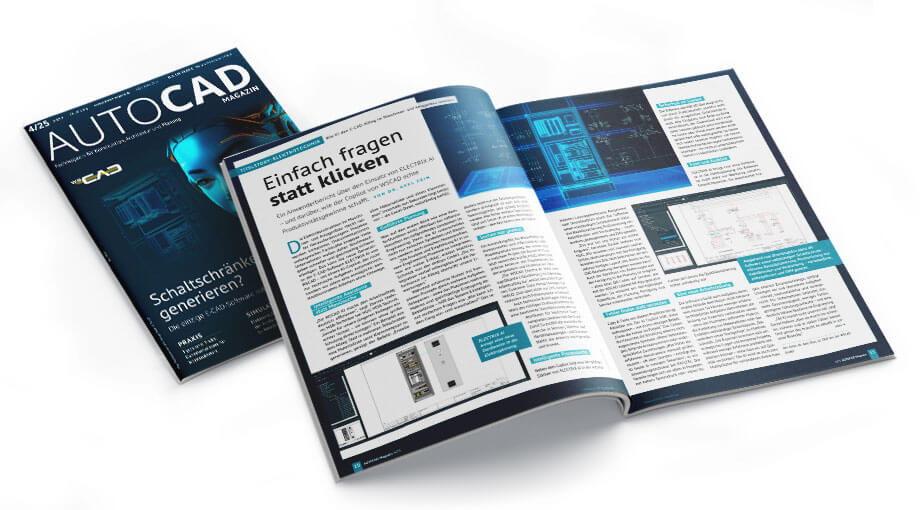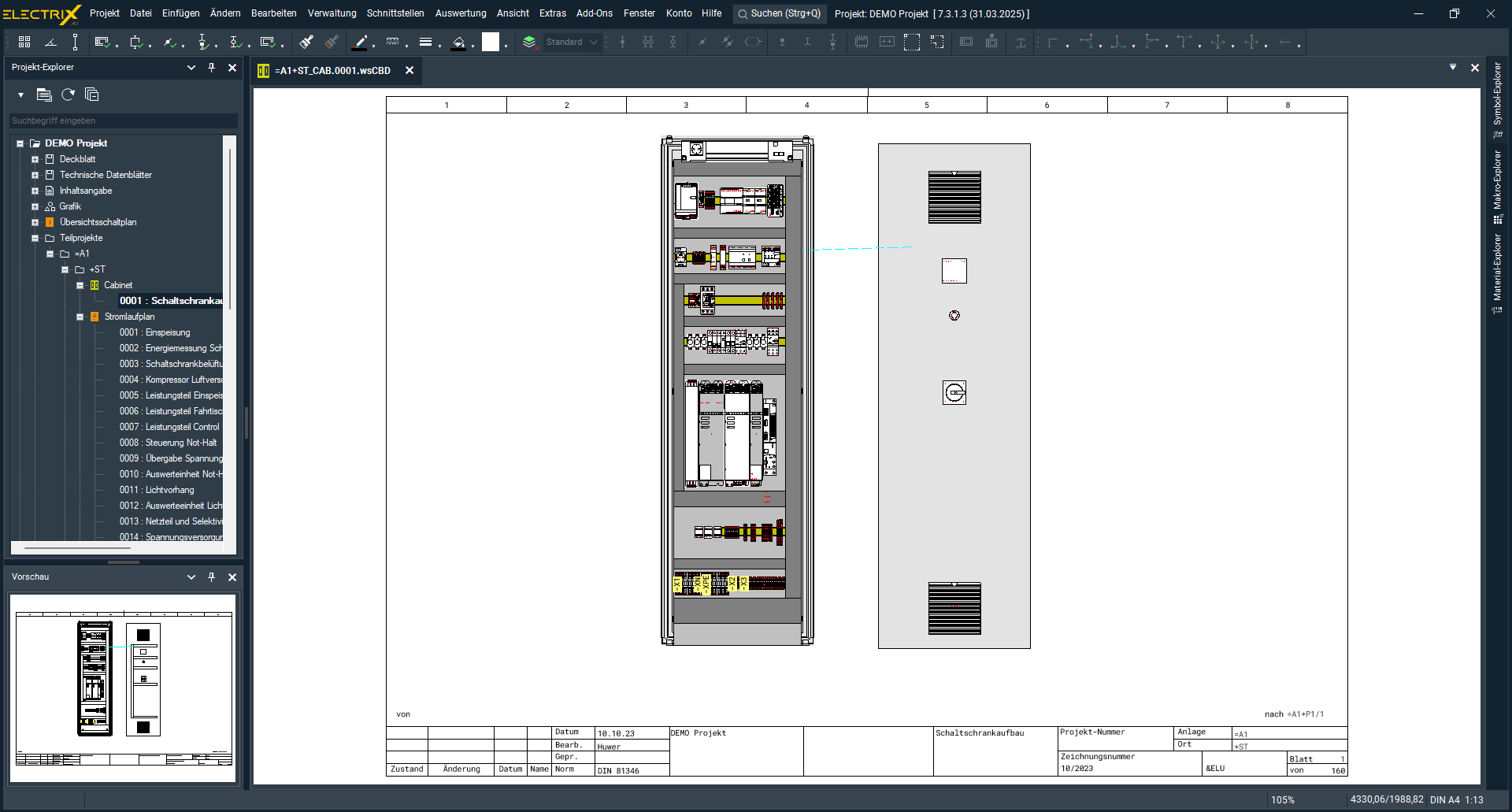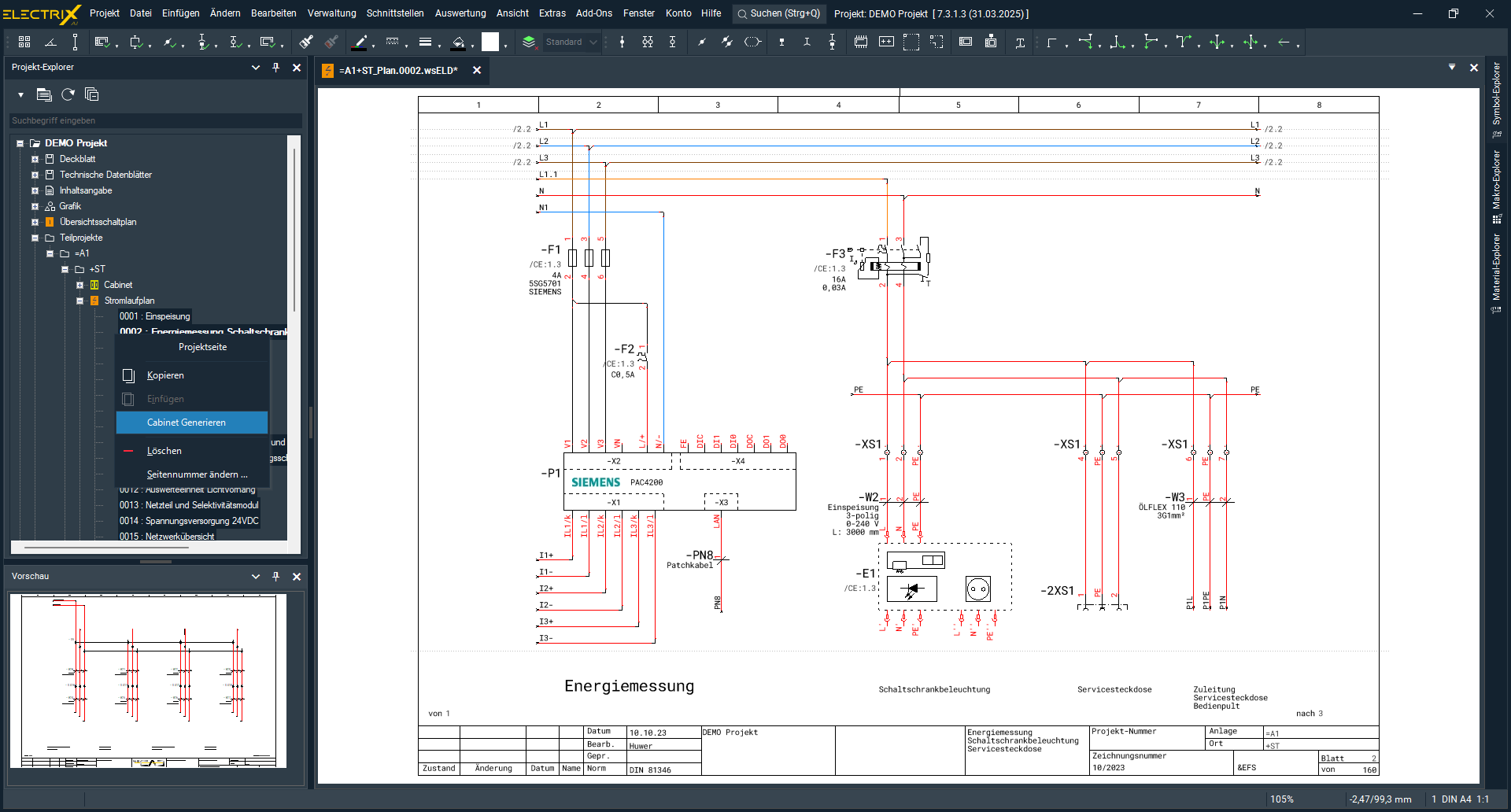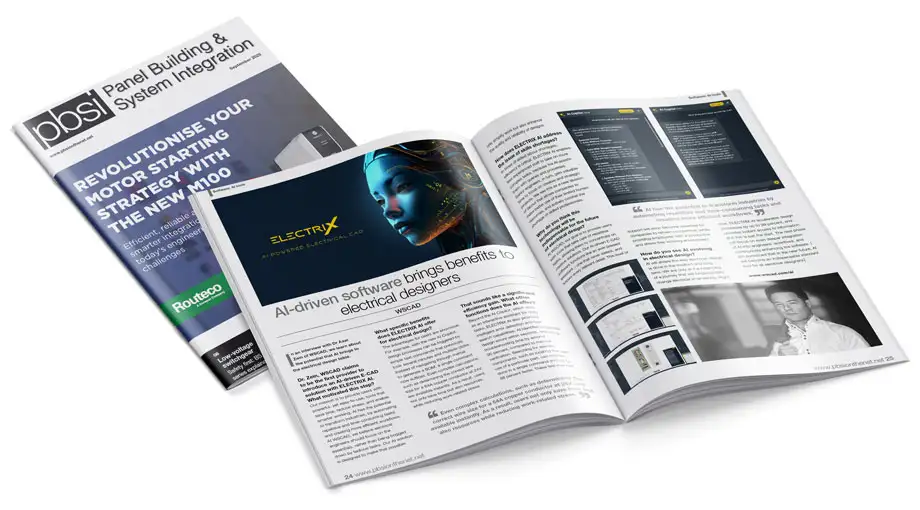
Cover story in the german AUTOCAD magazine (4/25 – June-July 2025)
How AI is changing everyday electrical CAD work in mechanical and plant engineering
Simply ask instead of clicking
A case study on the use of ELECTRIX AI – and how WSCAD’s copilot delivers real productivity gains.
Electrical design in mechanical and plant engineering is full of challenges: Projects are becoming more complex, documentation more extensive and skilled workers scarcer. Many companies therefore want to complete routine tasks faster and more reliably at the same time. The new generation of ELECTRIX AI electrical CAD software from WSCAD can do just that – with an AI Copilot that not only automates technical tasks, but also enables one thing above all: design-oriented work without detours.
Intelligent assistance instead of menu search
“WSCAD AI makes our day-to-day work much more efficient,” says Daniel Hoferer, MSR technician at HUG MSR-Technik. “This is a real advantage for our younger colleagues in particular – they can get started straight away without any major training.” An example from everyday life: instead of generating a material list and terminal diagram in several sub-steps, the command: “Create a material list and a terminal diagram” is sufficient. Both are available within seconds – as a fully populated Excel file.
Guided Designing
What appears to be a convenience function at first glance reveals a profound rethink in engineering on closer inspection. This is because AI not only distinguishes between symbols and components, but also between user profiles.
“The analysis and recommendation to integrate AI into our engineering processes was a complete success,” explains Matthias Schmidt from deXcon GmbH. “The integration went smoothly and the day-to-day performance exceeded our expectations.”
While experienced users delegate several tasks at once with complex prompts – such as placing several macros and generating the order list at the same time – the system helps beginners with simple questions such as: “How can I switch the snap on and off?” This not only reduces the amount of training required, but also enables new team members to become productive very quickly. What used to take several days can now often be completed in one morning – the rest is done by the Copilot.
Searching is a thing of the past
One use case: finding components and information across project boundaries. Anyone who wants to know in which project component 4711 was last used receives a precise answer immediately: with project name, modification date and direct link to the file.
“The WSCAD ELECTRIX AI significantly simplifies our day-to-day work,” explains Alexander Krahner, Customer Data Portal Manager at WAGO. “It not only saves time, but also significantly reduces sources of error.”
The AI also answers technical queries, such as the selection of the correct wire cross-section for a certain current load or attributes for certain voltage types, on demand. This eliminates the need for manual research in standards, tables and manufacturer catalogues – and yet the answer remains standard-compliant and correct.
Intelligent process chain
Alongside the Copilot, one of ELECTRIX AI’s greatest strengths is its automated layout generation. Based on the circuit diagram, the software designs a complete control cabinet: including component placement, positioning of cable ducts and wiring – compliant with standards and space-optimized.
“That used to be a real bottleneck for us,” reports Daniel Hoferer from HUG. “We had to do a lot of manual rework, and coordination with production used to cost us time. Now we get an almost finished layout that can be transferred directly to CNC machining.” It is also possible to feed changes from production back into designing- for example via QR codes on devices that are scanned with the WSCAD Cabinet AR app. This creates a continuous data flow that connects design, production and service.
Finding errors instead of assuming
Copy & paste from older projects brings legacy issues with it. The AI Copilot helps to track these down – with a single command: “Find the errors in the project.” The system scans the circuit, recognizes unassigned symbols, open connections, missing article numbers or contradictory assignments. “What an experienced designer used to have to check manually – often over hours – the AI now does in just a few seconds,” says an application engineer at BAELTEC. The advantages are particularly evident in projects with tight deadlines or many variants, where quality assurance was previously time-consuming.
A new division of labor
The software also allows tasks whose exact processes do not need to be known to the user. This means that less experienced employees can take on tasks that were previously reserved for experts – such as placing defined macros, extracting material lists or creating complete page layouts. “This changes our team structure,” says Matthias Schmidt. “The experts take care of strategic issues and complex projects, while less experienced people can work productively – without compromising on quality.” AI thus also becomes a multiplier for existing expertise.
Security in the system
WSCAD’s software not only impresses with its depth of functionality, but also with its sophisticated security concept. All entries are end-to-end encrypted, the chat history is deleted after each session, personal data or IP addresses are not saved or forwarded. This means that even sensitive projects with high data protection requirements can be realised without hesitation – an advantage that should not be underestimated in industrial environments.
Conclusion and outlook
ELECTRIX AI brings a new perspective to electrical design. The software is no longer just a tool, but a dialogue partner. It answers questions, recognises correlations, suggests solutions and takes on tasks – quickly, comprehensibly and in accordance with standards. For companies, this means more speed, fewer errors, less training – and significantly greater resilience in engineering.
“AI doesn’t do our job,” says Daniel Hoferer. “But it makes it faster, safer and, in many cases, better. And that’s exactly what’s needed in our industry right now.”
This technical article is intended exclusively for your personal use. Any reprinting or publication requires the express written consent of the publisher.







